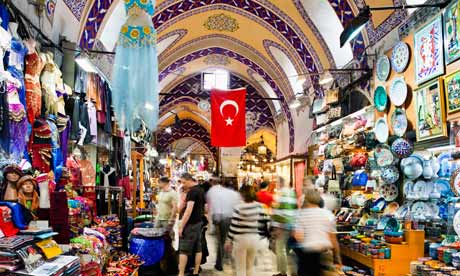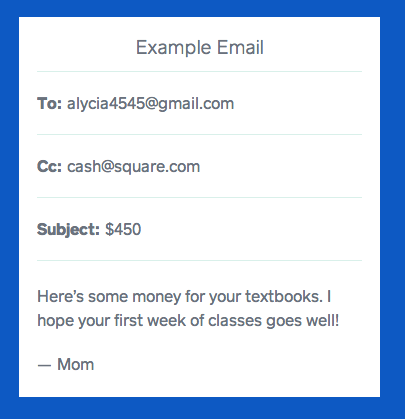
You might not think it but vendors in Istanbul’s Grand Bazaar have been using big data for decades. Photograph: Jorg Greuel/Getty Images
Even the oldest market in the world uses big data
As big data becomes increasingly popular, it’s occasionally worth taking a step back to think about what companies are looking to achieve as well as the necessary elements. Is investment in new technology really necessary, for example, if there is a cheaper – and ultimately simpler – means of collecting the required information?
Reza Soudagar, writing for multinational software company SAP, eloquently summarised how cost-effective ‘low-tech’ methods can be implemented to collect big data, citing the example of Istanbul’s Grand Bazaar. Housed in Cevahir Bedesten, customers are not asked traditional questions (“Do you need any help?”) but are pressed on more personal matters, such as which country shoppers are from, the duration of their trip and even which hotel (or area) they are staying in.
While one could easily mistake this as an attempt to keep customers interested for longer, a happy side effect, their reasoning is more sophisticated: it’s all about big data.
These questions alone don’t provide enough information to form patterns but staff combine the answers they receive with other traits they can instantly detect – the customer’s age, the kind of watch they are wearing, their smartphone model and even the brand of their clothes re – to match up customers with their likely preferences. And an incredible feature is that this all happens within minutes.
This allows a fairly basic understanding of just how businesses use big data. As Soudagar notes:
[They] gather diverse stores of information to truly understand the context of each customer interaction and then decide on the most appealing merchandise, the best price point or the right marketing offer.
But sometimes, it’s easier to automate – just ask Tesco
It’s also worth noting the experiences of larger stores. When Tesco, Britain’s biggest retailer, originally promised its customers nearly 20 years ago that it would open up a new checkout line if there was more than one person in front of them, the company faced a new challenge.
Their reasoning was simple; shoppers don’t like queues and companies expect that a satisfied customer is likely to lead to return.
In order to complete this new self-imposed challenge, staff working at tills suddenly had one more job; they had to constantly monitor their checkout queue and note how many people were waiting. Meanwhile, those stacking shelves also had to be aware of the length of queues so they could open a new line if necessary.
But although this was cost-effective (in terms of not spending more), one can expect that it led to inefficiencies – staff having to always look over their shoulder or manually input data means they may not have been focussed on their main role.
Eventually, Tesco introduced heat-sensing sensors to monitor the number of people in the store, with the company claiming this led to a 10% increase in pre-tax profits. The technology collected information such as the number of people in each queue, the average wait time and even the average store performance. This allowed Tesco to “predict the checkouts that [needed] to be open in an hour”, according to then CEO Terry Leahy.
By introducing the technology, they managed to automise their big data collection and analyse the trends across all of their stores so they knew how many staff they would need working at any time as well as how many checkout tills to keep open.
Don’t worry if you don’t yet know what to do with all that data you’re collecting – you’re not alone
The world of mobile payments has recently seen a lot of movement. First, Square Inc. made a splash last week by introducing Square Cash, which allows individuals to email money to friends.
This is something that Google introduced to a select set of users earlier this year through it’s Google Wallet programme but the company has yet to roll it out to the masses. The reality? It’s a very smart idea. Having to log on to tedious bank systems to transfer money can be a big hassle and a short email makes sense. All it requires is people to connect their debit cards and send emails to friends, such as the example one below.

Now you can send money to your friends by email. Screenshot: Square.com
Then Dwolla, arguably Square’s biggest rival, announced Dwolla Credit, which means online retailers can receive instant payments from Dwolla users at a fraction of the price they were being charged by credit card companies. All this means that Christopher Mims’s prediction last year, that Square and Dwolla might collaborate, is set to be tested as the final jigsaw piece falls into place.
And within the fast-moving world of mobile payments is Starbucks, who last year hand-picked and invested $ 25 million into Square, with all credit and debit payments being processed by Square across 7,000 stores.
Now thousands of customers are seamlessly paying for their coffee via Square Wallet on their mobile. One less loyalty card to carry around for thousands of Starbucks patrons. But what has the company done with all the data they have collected from their loyalty card scheme? Until last year, very little.
As reported by AdAge, attendees of the Big Data Retail Forum were told by Joe LaCugna, Starbucks’s former director of analytics and business intelligence, that Howard Schultz, the CEO of Starbucks “doesn’t care about data. He has absolutely no head for data.”
But, by March of this year, the company had profiled half of its loyalty card customers, nearly three million people. This allowed Starbucks to better understand its clientele and offer discounts based on specific goals.
Customers who have installed the mobile app and linked it to their loyalty card can be sent offers and rewards if they come in to for a coffee by this weekend, especially if the company worries that they’re unlikely to return soon. And how were regular customers rewarded? By not being offered a discount. After all, LaCugna said, “[why] would we give them a discount?”
And how about Square? Sarah Fair, the company’s CFO told Harvard Business Review that big data was the most exciting trend in the mobile space. “I think we are only scratching the surface of what we can do with data in the right way,” she said. “Big data can be used to create these wonderful experiences that people have opted into, that is incredibly exciting.”
But whether Starbucks is making the most of Square’s potential is yet to be seen and the company is remaining tight-lipped. Upon multiple requests for comment, we were told that no-one at the global coffee company was available to speak to the Guardian.
Do you think small businesses should start introducing technology to collect big data – or should they just follow the example of vendors in the Grand Bazaar? Have your say below or join in the debate on Twitter either with me directly @sirajdatoo or our official account @Guardiandata
FACEBOOK COMMENT